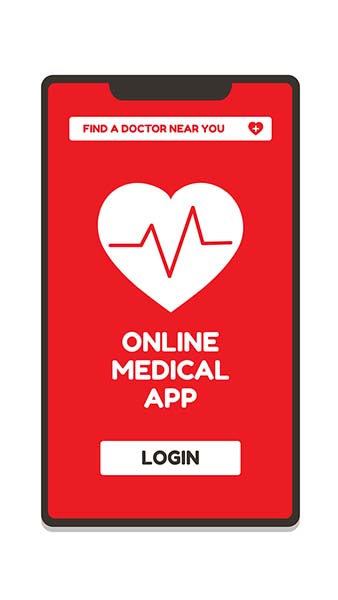One question every healthcare provider should ask themselves: What kind of digital experience do patients want?
According to a recent Harris Poll, 81% of patients said shopping for healthcare should be as easy as shopping for other common services.1
The truth is, it’s not that easy. Here are some things to consider.

Make it secure
Patients need to believe that everything they share will be protected. Beyond HIPAA regulations, this goes to the issue of trust.
Just as you want to trust that your provider has your best interests and health at heart, you want to be able to trust that your data is secure.
It’s the most important thing you owe your patients. So make sure you build every system with that in mind.
Make it personal
The more you can connect with patients on a personal level — tailoring the experience to each individual — the better.
It starts with listening. At the doctor’s office, patients want to know that a provider hears what they’re saying, and takes that into account when creating a care plan.
The same holds true in the digital world. Make sure the pathway to information is built for the user’s experience, not for how the process works. Think about what it’s like from the patient’s perspective, from the interface to content.
The corollary to listening is responding. Patients don’t like having to repeat information to literally every caregiver they meet with. This proves equally frustrating within the digital space.
Do patients have to fill out information multiple times to make an appointment or get to the next step of the process? Are you asking only for the minimum information that’s needed? Having clear profiles helps you understand patients and the pain points they face along their journey.
Make it simpler
Patients don’t care how you’re organized. Or if you need to hand off electronic health records, lab data and other information between departments.
All they want is a seamless, efficient experience from beginning to end.
Online scheduling. Appointment confirmation and reminders. Provider information. Pre-visit registration. Contactless check-in. Virtual appointments. Online payment options. Patient satisfaction surveys. How else can you streamline and improve the experience for patients?
Make it timely
Nobody likes to be left waiting. Your time is precious. Limiting wait times — in person or online — makes patients feel like you value their time.
It’s up to each individual hospital to decide what tool is right for you. But systems such as Clockwise can make it easier to handle things like ER wait times and online scheduling.
Make it transparent
Patients want to clearly understand what’s happening to them and why. This calls for accurate cost estimates from payers and price transparency from providers.
Do patients have to guess what a procedure is going to cost, or whether insurance will cover it? It’s better to have an estimate beforehand. So you can identify and deal with any questions or concerns well in advance.

5 questions to ask
One place healthcare providers commonly fall short in meeting patient expectations is with their website. To see if your website is patient-friendly, ask yourself these 5 questions:
Is it secure? Is it patient-focused? Is it personalized? Is it timely? Is it transparent?
If you don’t know the pain points that patients face, talk to them. Do research to get closer to meeting their expectations. Look beyond what they say, and examine how they behave. Better yet, give patients a seat at the table and engage them in redesigning the experience.
Or talk to MKR. With more than 50 years experience in the healthcare space, we can help you figure it out.

